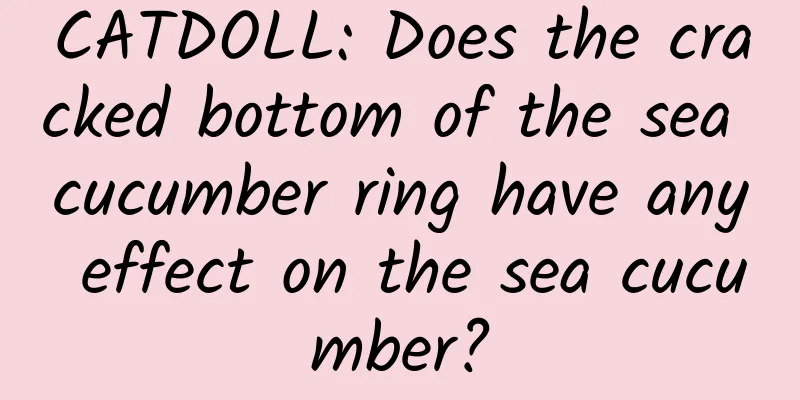CATDOLL : CATDOLL: What are the requirements for water quality management in pond shrimp farming?

What are the requirements for water quality management in pond shrimp farming?Strengthening the management of shrimp pond water quality and creating a good ecological environment are important measures to achieve high yields of shrimp farming in ponds. Specifically, the following four aspects should be mastered: (1) Manage the water quality of shrimp ponds according to the requirements of water environment conditions for the growth and development of freshwater shrimp Green shrimp are crustaceans that require the dissolved oxygen in the pond to be above 5 mg/L, the pH to be 7-8, the water transparency to be around 40 cm, the silt at the bottom to be around 10 cm, the organic matter content to be low, and the water to be fresh and lively. During the shrimp farming process, strengthen the monitoring and regulation of water quality, maintain good water quality, and promote the growth of green shrimp. (2) Manage the water quality of the shrimp pond according to the changing laws of the main water quality factors Dissolved oxygen is an important factor in water quality. The main sources of dissolved oxygen in water are: first, photosynthesis of green plants; second, dissolving oxygen in the air into water through wind diffusion; third, supplementing oxygen in water through artificial measures. The consumption of dissolved oxygen in water is: first, oxygen consumption by aquatic organisms; second, wind diffusion, which returns dissolved oxygen in water to the air; third, oxygen consumption by the decomposition of organic matter in the pond. The diurnal variation of dissolved oxygen in water is: in clear weather, due to the photosynthesis of green plants, a large amount of oxygen is released, and the dissolved oxygen in the water reaches saturation around noon, while at night, the photosynthesis of green plants stops, aquatic organisms consume a lot of oxygen by breathing, and organic matter decomposes and consumes oxygen. The dissolved oxygen in the shrimp pond is at the lowest level before dawn, so it is easy to cause hypoxia in shrimps at night and early morning. In addition, the water quality of the shrimp pond can also cause hypoxia in the shrimp pond through irregular fertilization and the death of a large number of algae, or continuous rainy weather. Pond inspections should be strengthened, attention should be paid to changes in water quality and dissolved oxygen, and oxygenation measures should be taken in time to avoid hypoxia accidents and losses. The pH change of shrimp ponds is mainly due to the metabolites of anaerobic bacteria and the organic acids produced by the decay of leftover bait. In addition, factors such as acid rain can also cause changes in the pH of the pond water. The transparency of shrimp pond water is mainly determined by the amount of suspended matter in the water, especially algae. Usually tea brown and oily green are better, and the transparency is about 40 cm. Water quality management should be strengthened according to the diurnal changes of these factors. (3) Manage the water quality of shrimp ponds according to the seasonal changes of fishing time. In the early stage of shrimp fry stocking, the water depth of the shrimp pond can be maintained at about 0.8 meters. August and September are both hot weather and the peak growth season for freshwater shrimp, so the pond should be filled with water to a depth of 1.2 to 1.5 meters. The water quality in autumn is very easy to change. Depending on the water quality of the shrimp pond, water should be added or replaced once every 7 to 10 days. The amount of water replacement should not be too large, generally around 1/4. Or start the aerator regularly to add oxygen to the shrimp pond. Normally, if the water quality is found to be too rich or too concentrated, add or replace water in time to adjust the water quality. (4) Manage the water quality of the shrimp pond according to weather changes Keep listening to weather forecasts and patrol the ponds in the morning and evening to observe changes in the water quality of the shrimp ponds. Take appropriate measures based on the weather, water quality and shrimp activity to maintain good water quality. Strengthening the management of shrimp pond water quality and creating a good ecological environment are important measures to achieve high yields of shrimp farming in ponds. Specifically, the following four aspects should be mastered: (1) Manage the water quality of shrimp ponds in accordance with the requirements of water environment conditions for the growth and development of freshwater shrimps. Freshwater shrimps are crustaceans, and require the dissolved oxygen in the pond water to be above 5 mg/L, the pH to be 7-8, the water transparency to be around 40 cm, the silt at the bottom of the pond to be around 10 cm, the organic matter content to be low, and the water quality to be fresh and lively. During the shrimp farming process, strengthen the monitoring and regulation of water quality, maintain good water quality, and promote the growth of freshwater shrimps. (2) Manage the water quality of shrimp ponds according to the changing rules of the main water quality factors. Dissolved oxygen is an important factor in water quality. The main sources of dissolved oxygen in water are: first, photosynthesis of green plants; second, dissolving oxygen in the air into water through wind diffusion; third, supplementing oxygen in water through artificial measures. The consumption of dissolved oxygen in water is: first, oxygen consumption by aquatic organisms; second, wind diffusion, which returns dissolved oxygen in water to the air; third, oxygen consumption by the decomposition of organic matter in the pond. The diurnal variation of dissolved oxygen in water is: in clear weather, due to the photosynthesis of green plants, a large amount of oxygen is released, and the dissolved oxygen in water reaches saturation around noon. At night, the photosynthesis of green plants stops, aquatic organisms consume a lot of oxygen by breathing, and organic matter decomposes and consumes oxygen. The dissolved oxygen in the shrimp pond is at the lowest level before dawn. Therefore, it is easy to cause hypoxia in shrimp at night and early morning. In addition, the water quality of shrimp ponds can also cause hypoxia through irregular fertilization, the death of a large number of algae, or continuous rainy weather. Pond inspections should be strengthened, attention should be paid to the changes in water quality and dissolved oxygen, and oxygenation measures should be taken in time to avoid hypoxia accidents and losses. The pH change of shrimp ponds is mainly caused by the metabolites of anaerobic bacteria and the organic acids produced by the decay of leftover bait. In addition, factors such as acid rain can also cause changes in the pH of pond water. The transparency of shrimp pond water is mainly determined by the amount of suspended matter in the water, especially the amount of algae. Usually, tea brown and oily green are better, and the transparency is about 40 cm. Water quality management should be strengthened according to the day and night changes of these factors. (3) Manage the water quality of the shrimp pond according to the seasonal changes in fishing seasons. In the early stage of shrimp fry stocking, the water depth of the shrimp pond can be maintained at about 0.8 meters. August to September is both a hot weather and the peak season for the growth of freshwater shrimp, so the pond water should be filled to a depth of 1.2 to 1.5 meters. The water quality in autumn is very easy to change. Depending on the water quality of the shrimp pond, water should be added or changed once every 7 to 10 days. The amount of water changed should not be too large, generally about 1/4. Or start the aerator regularly to add oxygen to the shrimp pond. In normal times, if the water quality is found to be too rich or too concentrated, water should be added or changed in time to regulate the water quality. (4) Manage the water quality of the shrimp pond according to weather changes. Keep listening to weather forecasts and patrol the pond in the morning and evening to observe changes in the water quality of the shrimp pond. Take appropriate measures based on the weather, water quality and shrimp activity to maintain good water quality. This article is from: China Agriculture Press "Green Development and Green Plant Protection" What preparations are needed before releasing adult crabs into ecological pond farming?1. Expose the pond bottom to the sun. After the pond dries up in winter, remove excess silt and then expose it to the sun for 1 to 2 months to oxidize the bottom organic matter and remove harmful pathogens. 2. Drug pond cleaning: 20 days before stocking, the pond is filled with 750cm of water. Use 100kg/mu to 125kg/mu of quicklime to make a slurry and evenly sprinkle it over the entire pond to remove wild fish and harmful substances in the pond. 3. Release snails: Before Qingming Festival, one week after pond cleaning, release 200kg/mu to 250kg/mu of fresh snails and allow them to reproduce naturally. Small snails can be used as live bait for river crabs and shrimps, and can also remove some residual bait to purify water quality. Live snails are released twice, once before Qingming Festival and once at the end of August, so as to avoid excessive water quality and large-scale reproduction of moss caused by too many live snails released at one time. 4. Planting and maintenance of aquatic plants: After cleaning the pond, plant Vallisneria, Hydrilla verticillata, Potamogeton, Elodea, etc., with the planting area accounting for about 60% of the total area of the pond. In order to facilitate management and improve the survival rate of young crabs, and prevent the planted and transplanted aquatic plants from being eaten by river crabs as soon as they sprout, a temporary crab rearing area should be set up to facilitate the growth of aquatic plants and the reproduction of snails. At one end of the pond or in the central deep water, a temporary crab rearing area is enclosed with a fence, with an area of 1/10 to 1/5 of the crab pond area. The crab seeds are concentratedly cultivated until the end of April to the beginning of May. After the aquatic plants in the pond grow and the snails reproduce to a certain number, the river crabs are placed in the pond for cultivation. 5. Watering and fertilizing: One week before stocking, fill the pond with water to a depth of 1250px. Depending on the fertility of the pond water, apply 100kg/mu to 200kg/mu of fermented organic fertilizer to cultivate palatable bait organisms that can be consumed after the seedlings are put into the pond, which is beneficial to increasing the growth rate of river crabs and the survival rate of aquaculture. 1. Stocking mode and seed selection The stocking specification is 500-800 high-quality crabs of 100-160 kg/kg, 10 kg/mu of freshwater shrimps of 50-75 px in length, 20,000-40,000 freshwater shrimps of 25-50 px in length, 15-20 mandarin fish of 125-175 px in length, 15 silver carps of 250 g/tail in weight, and 50 bighead carps of 150 g/tail in weight. The main observations are the feeding, disease, growth and water quality changes of river crabs, especially the sluggishness of activities and dead crabs on the beach. If abnormalities are found, the management measures will be adjusted in time. 2. Stocking time: Spring fry of green shrimp are stocked in early February, and autumn fry of green shrimp are stocked in late July; river crabs, silver carp and bighead carp are stocked in late February to early March; mandarin fish fry are stocked in late May to mid-June. Water quality management: Reasonable use of microbial agents (such as EM bacteria, photosynthetic bacteria, etc.) can be used once every 15 days from late May to early October to improve the pool water environment. One aerator is equipped for every 5 mu of pond, and one water pump is equipped for every 10 mu of pond. The aerator is often turned on or the water pump is used to add water for 1 to 3 hours at noon on sunny days during the growing season to keep the dissolved oxygen content of the pool water above 5 mg/L. In the middle and late stages of breeding, 5 kg/mu of quicklime is used to sprinkle the entire pool once every 20 days to adjust the pH of the pool water to 7.5-8.0. One day before stocking, some new water is injected into the pond, and all water injections must be strictly filtered with a dense mesh of 60 mesh or more. From March to June, add water every 7 to 10 days to control the transparency of the water in the pond at 750px to 1000px; from July to September, add water every 5 to 7 days to control the transparency of the water in the pond at 1000px to 1250px; from October to December, add water every 15 days, 250px to 500px each time, to control the transparency of the water in the pond at 750px to 1000px. From March to April, the water level of the pond should be controlled at 1125px to 1250px to facilitate the increase of water temperature; from May to June, the water level of the pond should be controlled at 1250px to 2000px; during the high temperature period from July to September, the water level of the pond should be raised to 3000px to 3750px. |
<<: CATDOLL: A list of golden arowana breeding tips
>>: CATDOLL: How to prevent and control common diseases of forest frogs?
Recommend
CATDOLL: Treatment and prevention measures for chicken laryngitis to keep your chickens healthy and worry-free
What is chicken laryngitis Chicken strep throat, ...
CATDOLL: What color is the flesh of a silver carp after it dies?
What color is the flesh of a silver carp after it...
CATDOLL: What changes and matters should be paid attention to when raising snails (What changes and matters should be paid attention to when raising snails)
1. How to keep snails alive? Before raising snail...
CATDOLL: Is it safe to eat hairtail during the epidemic?
Is it safe to eat hairtail during the epidemic? T...
CATDOLL: How to Catch Bees
Bees are caught with a net. You can catch them at...
CATDOLL: What are the advantages and product quality of Junan Shunda Meat Processing Factory?
Advantages of Junan Shunda Meat Processing Plant ...
CATDOLL: How big a square fish tank do I need to keep two 15 cm sturgeons?
Sturgeons prefer colder places north of the tempe...
CATDOLL: Which organ does a bee rely on to collect pollen?
1. Which organ do bees rely on to collect pollen?...
CATDOLL: How to feed piglets after weaning and how to feed sows
How to feed piglets after weaning Weaning is a cr...
CATDOLL: Under what temperature do mandarin fish eat?
Mandarin fish is also known as sweet-scented osma...
CATDOLL: Diarrhea in piglets: causes, treatment and prevention
Diarrhea in piglets is one of the common health p...
CATDOLL: Can you tell me how to use corn and platycodon to make fermented mealworm feed?
1. How to use corn and platycodon to make mealwor...
CATDOLL: What are the techniques and tips for bass fishing?
Fishing can not only relax you, but also connect ...
CATDOLL: How to raise maggot flies using chicken, duck and pig manure?
How to raise maggot flies using chicken, duck and...
Why do cats always like to lick their fur?
Reasons why cats like to lick their fur: 1. Cats ...









